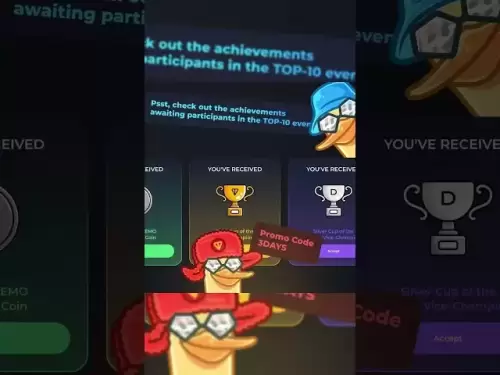-
 Bitcoin
Bitcoin $117400
-0.46% -
 Ethereum
Ethereum $3768
0.60% -
 XRP
XRP $3.551
2.09% -
 Tether USDt
Tether USDt $1.000
0.00% -
 Solana
Solana $203.2
11.30% -
 BNB
BNB $770.9
1.92% -
 USDC
USDC $0.9999
0.01% -
 Dogecoin
Dogecoin $0.2709
-0.02% -
 Cardano
Cardano $0.9024
4.49% -
 TRON
TRON $0.3139
0.60% -
 Hyperliquid
Hyperliquid $45.60
-1.41% -
 Stellar
Stellar $0.4730
-1.34% -
 Sui
Sui $4.025
2.15% -
 Chainlink
Chainlink $19.79
2.19% -
 Hedera
Hedera $0.2724
-2.39% -
 Avalanche
Avalanche $25.93
3.05% -
 Bitcoin Cash
Bitcoin Cash $524.0
-1.83% -
 Shiba Inu
Shiba Inu $0.00001558
0.50% -
 Litecoin
Litecoin $116.7
-0.30% -
 UNUS SED LEO
UNUS SED LEO $8.996
0.00% -
 Toncoin
Toncoin $3.334
1.83% -
 Polkadot
Polkadot $4.506
0.34% -
 Uniswap
Uniswap $10.99
4.83% -
 Ethena USDe
Ethena USDe $1.001
0.03% -
 Pepe
Pepe $0.00001461
3.17% -
 Monero
Monero $320.3
-1.01% -
 Bitget Token
Bitget Token $4.935
0.36% -
 Dai
Dai $0.9998
0.00% -
 Aave
Aave $322.4
-1.25% -
 Bittensor
Bittensor $455.6
9.33%
What is the forced liquidation mechanism of HTX contracts? What happens if the margin is not enough?
HTX's forced liquidation mechanism protects traders and the platform by closing positions when margin levels drop below the maintenance requirement, preventing unlimited losses.
May 17, 2025 at 10:21 am
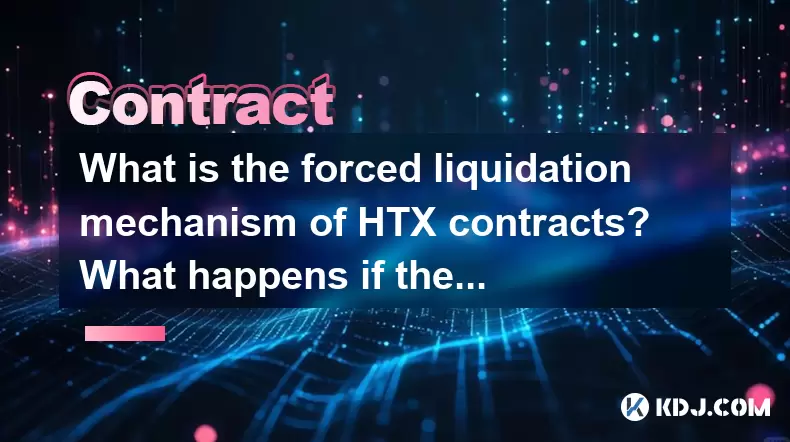
The forced liquidation mechanism of HTX contracts is a crucial aspect of trading on the platform, designed to manage risk and protect both the trader and the exchange. This mechanism comes into play when a trader's position experiences significant losses, and their margin falls below a certain threshold. In this article, we will explore the intricacies of the forced liquidation mechanism, what happens if the margin is not enough, and how traders can navigate these situations.
Understanding Forced Liquidation
Forced liquidation is a process initiated by the exchange when a trader's position reaches a point where the margin is insufficient to cover potential further losses. This mechanism is designed to prevent traders from incurring unlimited losses and to maintain the stability of the platform. When a position is liquidated, the exchange automatically closes the position to mitigate further risk.
How Forced Liquidation Works on HTX
On HTX, the forced liquidation mechanism is triggered when the margin level of a position falls below the maintenance margin requirement. The margin level is calculated as the ratio of the account's equity to the used margin. If this level drops below the set threshold, the system will initiate the liquidation process.
- Maintenance Margin Requirement: This is the minimum margin level required to keep a position open. If the margin level falls below this requirement, the position is at risk of being liquidated.
- Liquidation Price: This is the price at which the position will be liquidated. It is calculated based on the entry price, the amount of leverage used, and the maintenance margin requirement.
When the market price reaches the liquidation price, HTX will automatically close the position to prevent further losses. The proceeds from the liquidation are used to cover the losses, and any remaining funds are returned to the trader's account.
What Happens If the Margin Is Not Enough?
If the margin in a trader's account is not sufficient to cover the losses incurred during trading, the position will be liquidated. Here's a step-by-step breakdown of what happens:
- Monitoring Margin Levels: HTX continuously monitors the margin levels of all open positions. If the margin level falls below the maintenance margin requirement, the system flags the position for potential liquidation.
- Liquidation Trigger: When the market price hits the liquidation price, the system automatically triggers the liquidation process.
- Position Closure: The exchange closes the position at the current market price. This action is taken to prevent further losses that could exceed the available margin.
- Loss Coverage: The proceeds from the liquidation are used to cover the losses. If the proceeds are not enough to cover the full amount of the losses, the trader's account balance will be reduced accordingly.
- Remaining Funds: Any remaining funds after covering the losses are returned to the trader's account.
Impact of Forced Liquidation on Traders
Forced liquidation can have significant implications for traders. Understanding these impacts can help traders better manage their positions and mitigate risks.
- Loss of Position: The most immediate impact is the loss of the trading position. Once liquidated, the trader no longer holds the position and cannot benefit from any subsequent favorable market movements.
- Financial Impact: Liquidation can result in financial losses, as the position is closed at the liquidation price, which may be less favorable than the entry price.
- Account Balance: The trader's account balance may be reduced if the liquidation proceeds are insufficient to cover the losses. This can affect the trader's ability to open new positions or continue trading.
Strategies to Avoid Forced Liquidation
While forced liquidation is an inherent risk in leveraged trading, there are strategies that traders can employ to minimize the likelihood of their positions being liquidated.
- Monitor Margin Levels: Regularly check the margin levels of your positions. If the margin level is approaching the maintenance margin requirement, consider adding more funds to your account or reducing your position size.
- Use Stop-Loss Orders: Implementing stop-loss orders can help limit potential losses. A stop-loss order automatically closes a position when the market price reaches a specified level, preventing further losses that could lead to liquidation.
- Reduce Leverage: Using lower leverage can reduce the risk of liquidation. Higher leverage increases the potential for both gains and losses, making positions more susceptible to liquidation.
- Diversify Positions: Spreading your investments across multiple positions can help mitigate the risk of any single position being liquidated. Diversification can provide a buffer against market volatility.
Practical Example of Forced Liquidation on HTX
To illustrate how forced liquidation works on HTX, let's consider a practical example. Suppose a trader opens a long position on Bitcoin with a leverage of 10x, using $1,000 as the initial margin. The entry price is $50,000, and the maintenance margin requirement is 50%.
- Initial Margin: $1,000
- Position Value: $10,000 (10x leverage)
- Entry Price: $50,000
- Maintenance Margin Requirement: 50%
If the price of Bitcoin drops to $45,000, the position value becomes $9,000 (10,000 * 45,000 / 50,000). The unrealized loss is $1,000, and the account equity is now $0 ($1,000 initial margin - $1,000 unrealized loss). The margin level is now 0% ($0 equity / $1,000 used margin), which is below the maintenance margin requirement of 50%.
At this point, the liquidation price is calculated as follows:
- Liquidation Price: Entry Price - (Entry Price * Maintenance Margin Requirement / Leverage)
- Liquidation Price: $50,000 - ($50,000 * 0.50 / 10) = $47,500
If the market price reaches $47,500, the position will be liquidated. The exchange will close the position at $47,500, resulting in a loss of $2,500 ($50,000 - $47,500). Since the initial margin was only $1,000, the trader's account balance will be reduced to $0, and the remaining $1,500 loss will be absorbed by the exchange.
Frequently Asked Questions
Q1: Can I prevent forced liquidation once it has been triggered?
No, once the forced liquidation process has been triggered, it cannot be stopped. The exchange automatically closes the position to prevent further losses. However, traders can take proactive steps to avoid reaching the liquidation threshold in the first place.
Q2: What happens if the market price rebounds after my position is liquidated?
If the market price rebounds after your position is liquidated, you will not benefit from the favorable price movement. Once a position is liquidated, it is closed, and you no longer hold the position. This underscores the importance of managing risk and avoiding liquidation.
Q3: How can I calculate the liquidation price of my position?
The liquidation price can be calculated using the formula: Liquidation Price = Entry Price - (Entry Price * Maintenance Margin Requirement / Leverage). This calculation helps you understand at what price your position will be liquidated, allowing you to manage your risk accordingly.
Q4: Does HTX charge any fees for forced liquidation?
HTX may charge fees for forced liquidation, which are typically outlined in the platform's fee structure. These fees are intended to cover the costs associated with managing the liquidation process and maintaining the stability of the platform. It's important to review the fee schedule before trading to understand the potential costs involved.
Disclaimer:info@kdj.com
The information provided is not trading advice. kdj.com does not assume any responsibility for any investments made based on the information provided in this article. Cryptocurrencies are highly volatile and it is highly recommended that you invest with caution after thorough research!
If you believe that the content used on this website infringes your copyright, please contact us immediately (info@kdj.com) and we will delete it promptly.
- MoonBull's Whitelist Mania: Your Last Shot at 100x Crypto Gains?
- 2025-07-22 10:30:12
- Meme Coins in 2025: Explosive Gains or Fading Fad?
- 2025-07-22 10:30:12
- Kim Keon-hee Crypto Probe: Scandal Rocks South Korea's Political Scene
- 2025-07-22 10:50:12
- ETH Holders in Profit: Value Surge Fuels Bullish Sentiment
- 2025-07-22 09:30:13
- NEAR Protocol's AI Leap: Double-Digit Gains and Future Potential
- 2025-07-22 09:30:13
- Cryptos, Meme Coins, Buy Now: Riding the Wave of Hype
- 2025-07-22 08:30:13
Related knowledge
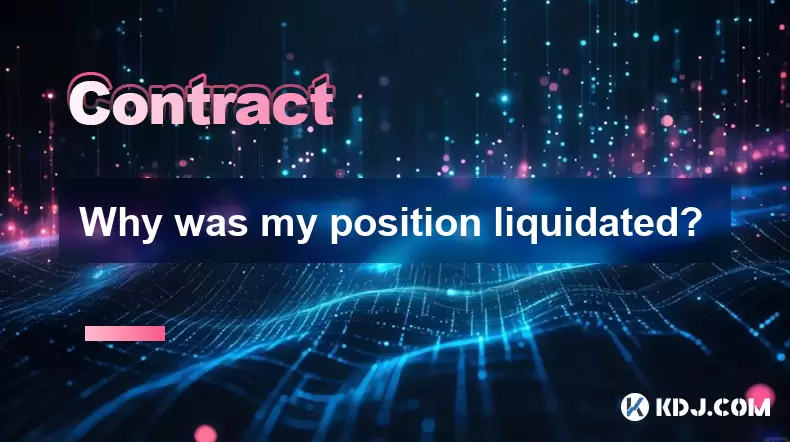
Why was my position liquidated?
Jul 22,2025 at 12:07pm
Understanding Liquidation in Crypto TradingLiquidation in cryptocurrency trading occurs when your position is automatically closed by the exchange due...
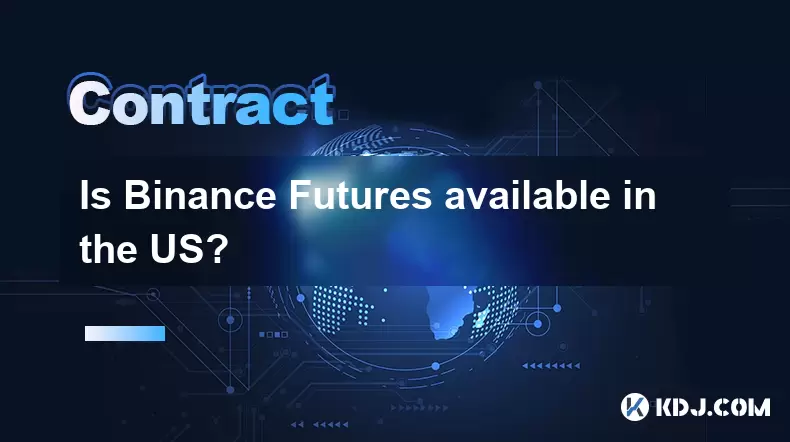
Is Binance Futures available in the US?
Jul 22,2025 at 11:42am
Understanding Binance Futures and Its Global ReachBinance Futures is a derivatives trading platform offered by Binance, one of the world’s largest cry...

What is a maker vs a taker fee?
Jul 19,2025 at 01:14am
Understanding the Basics of Cryptocurrency Exchange FeesIn the world of cryptocurrency trading, maker vs taker fees are a fundamental concept that eve...
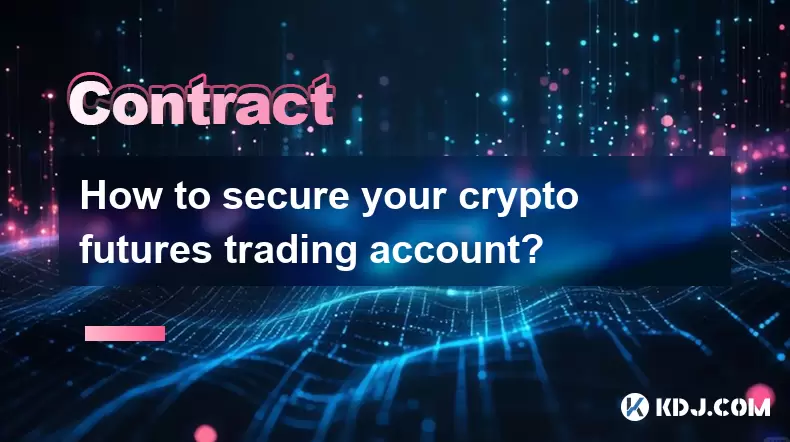
How to secure your crypto futures trading account?
Jul 21,2025 at 11:42pm
Understanding the Risks in Crypto Futures TradingCrypto futures trading involves significant risks due to market volatility and leverage. Your trading...
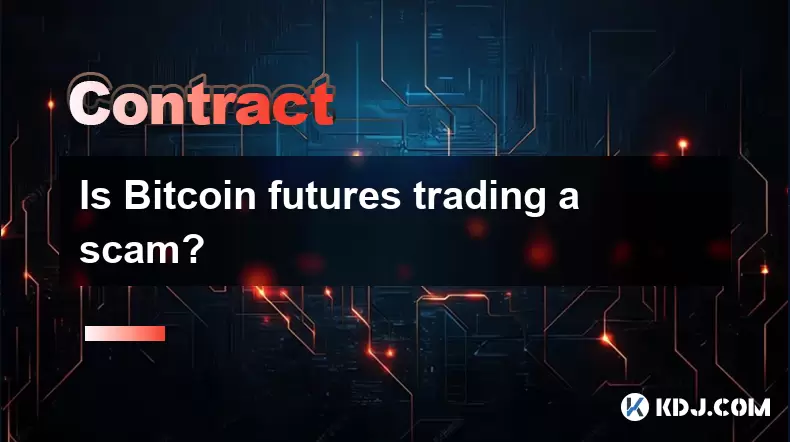
Is Bitcoin futures trading a scam?
Jul 22,2025 at 01:42am
Understanding Bitcoin Futures TradingBitcoin futures trading refers to the process of buying and selling contracts that derive their value from the fu...

How to analyze Bitcoin futures data from CME?
Jul 19,2025 at 05:22pm
Understanding Bitcoin Futures on CMEBitcoin futures on the CME Group (Chicago Mercantile Exchange) represent a regulated financial instrument that all...

Why was my position liquidated?
Jul 22,2025 at 12:07pm
Understanding Liquidation in Crypto TradingLiquidation in cryptocurrency trading occurs when your position is automatically closed by the exchange due...

Is Binance Futures available in the US?
Jul 22,2025 at 11:42am
Understanding Binance Futures and Its Global ReachBinance Futures is a derivatives trading platform offered by Binance, one of the world’s largest cry...

What is a maker vs a taker fee?
Jul 19,2025 at 01:14am
Understanding the Basics of Cryptocurrency Exchange FeesIn the world of cryptocurrency trading, maker vs taker fees are a fundamental concept that eve...

How to secure your crypto futures trading account?
Jul 21,2025 at 11:42pm
Understanding the Risks in Crypto Futures TradingCrypto futures trading involves significant risks due to market volatility and leverage. Your trading...

Is Bitcoin futures trading a scam?
Jul 22,2025 at 01:42am
Understanding Bitcoin Futures TradingBitcoin futures trading refers to the process of buying and selling contracts that derive their value from the fu...

How to analyze Bitcoin futures data from CME?
Jul 19,2025 at 05:22pm
Understanding Bitcoin Futures on CMEBitcoin futures on the CME Group (Chicago Mercantile Exchange) represent a regulated financial instrument that all...
See all articles
























